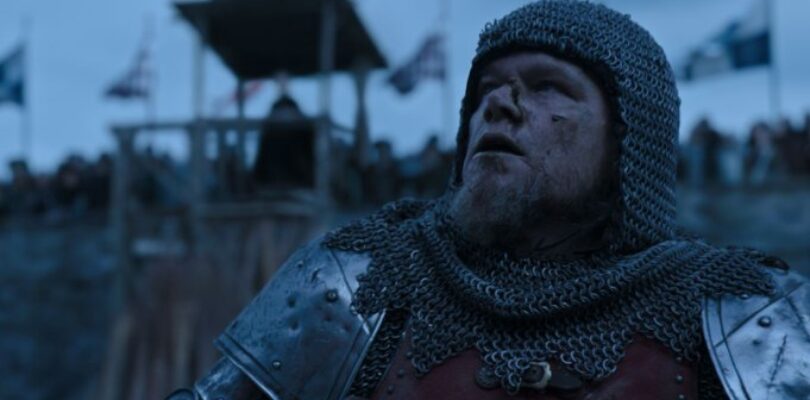Director Ridley Scott’s film The Last Duel is not only the story of the last, legally sanctioned duel held in France, it is also a loose structural adaptation of Akira Kurosawa’s seminal masterpiece Rashomon (1950) in the sense that it features the same story told from three different perspectives. In addition to how remarkably contemporary the film’s view of gender politics ends up being, what also proves to be rather unique in this instance though is the distinct voices that each of the three interpretations of the story is afforded by the script written by Ben Affleck, Matt Damon, and Nicole Holofcener.
Based on actual events (as the viewer is informed as the film begins), The Last Duel recounts the story of the last sanctioned duel held in France. This duel, between Jean de Carrouges (Matt Damon) and Jacques Le Gris (Adam Driver), is brought about after Carrouges’ wife, Marguerite (Jodie Comer) is assaulted by Le Gris and he denies the charges raised against him. This results in a trial by combat to determine, in the eyes of God, which party has been wronged and which shall be punished.
Although director Scott’s keen visual style in present throughout the film, it is the Rashomon-like structure to the narrative that provides its heft. Told in three parts, the film first recounts the events leading to the duel between Carrouges and Le Gris from each of their points of views before shifting to Marguerite’s before the final act. The characters are so effectively developed by these points of view that it is incredibly difficult to dissect the nuanced differences in each account without negating the performances of the three leads.
In their first screenplay collaboration since the Oscar-winning Good Will Hunting (1997), Affleck and Damon, enlist the talents of Holofcener (the Oscar-nominated screenwriter of Can You Ever Forgive Me? [2018]). The result is a story told from three distinct perspectives that simultaneously allows the viewer to develop their own interpretation while being guided by a seemingly truer narrative than the others.
The overall beauty of the physical construction of the film, including the production design by Arthur Max as well as the costuming provided by Janty Yates, are well-represented by the breathtaking work of cinematographer Dariusz Wolski. Again, the methodical, yet seamless way in which editor Claire Simpson strings together the various strands of the three separate narratives at play here is the glue that binds all of the disparate elements of this film into a cohesive, eerily evocative whole.
Despite the structural influence of Rashomon at work in The Last Duel, Scott’s film is firmly held together by a well-written and inventive script that is brought to life through the fine work of three very talented actors.[box_info]WHERE TO WATCH (powered by JustWatch)
[/box_info]



